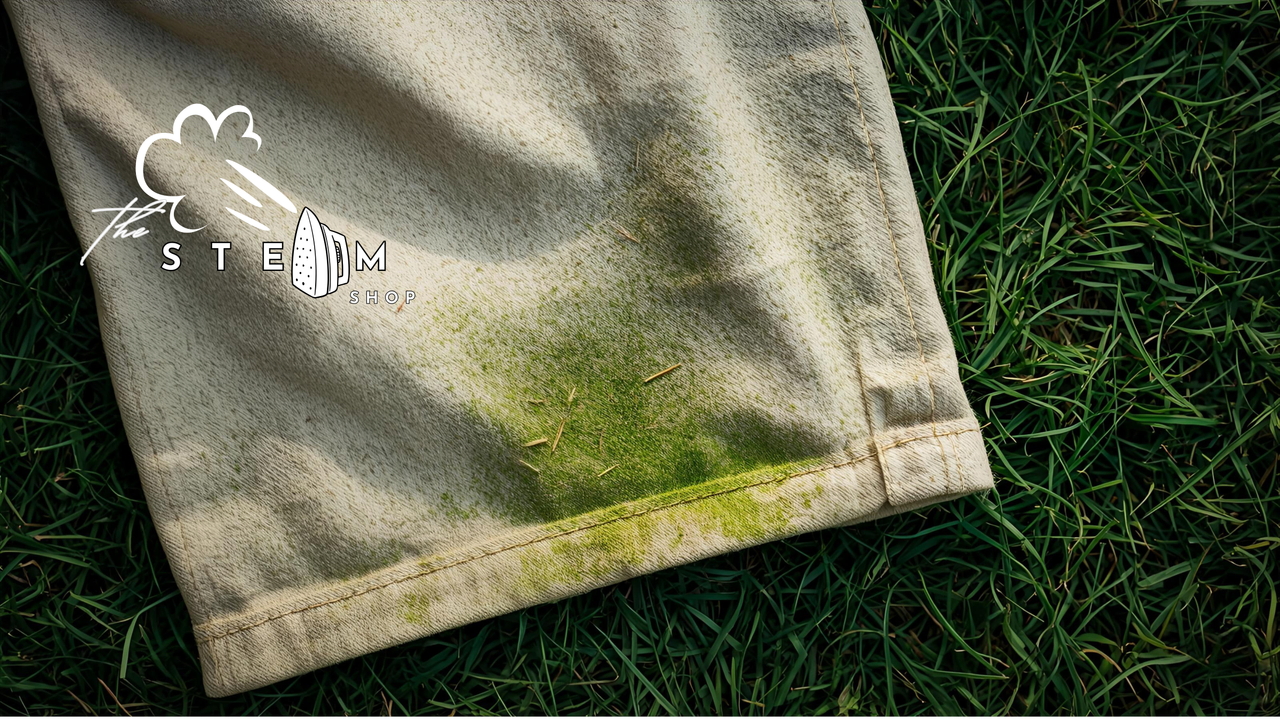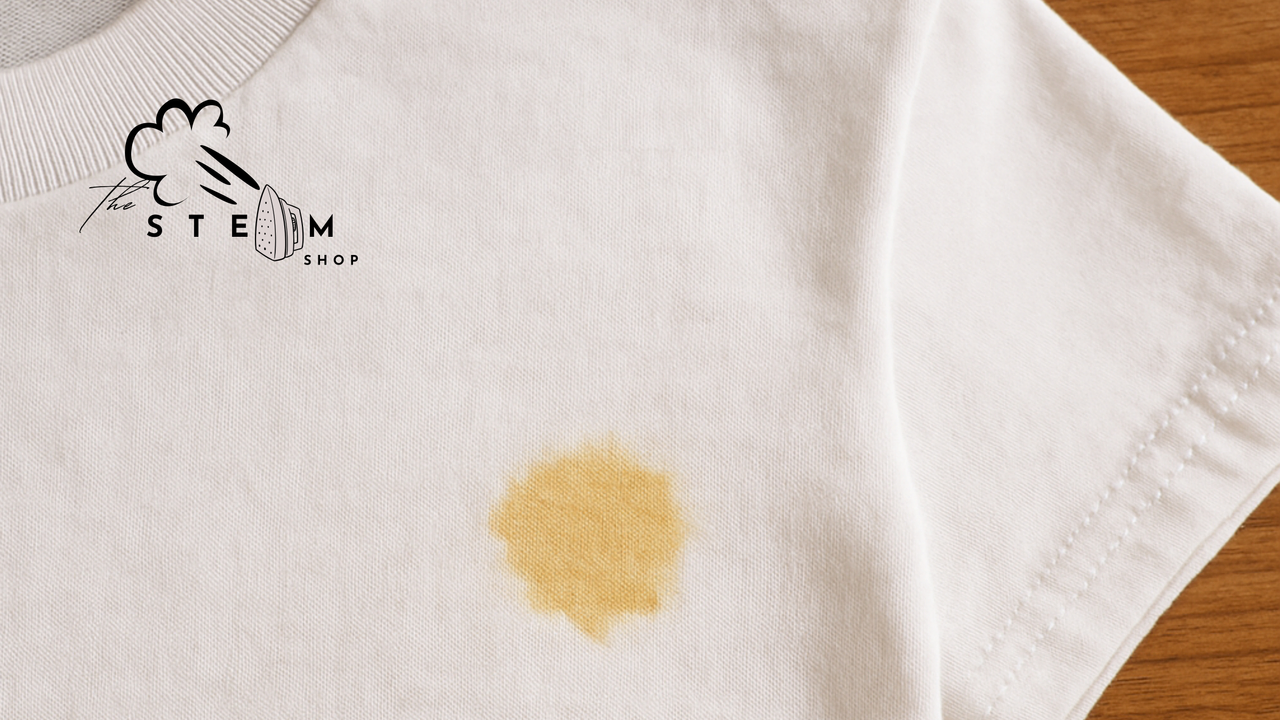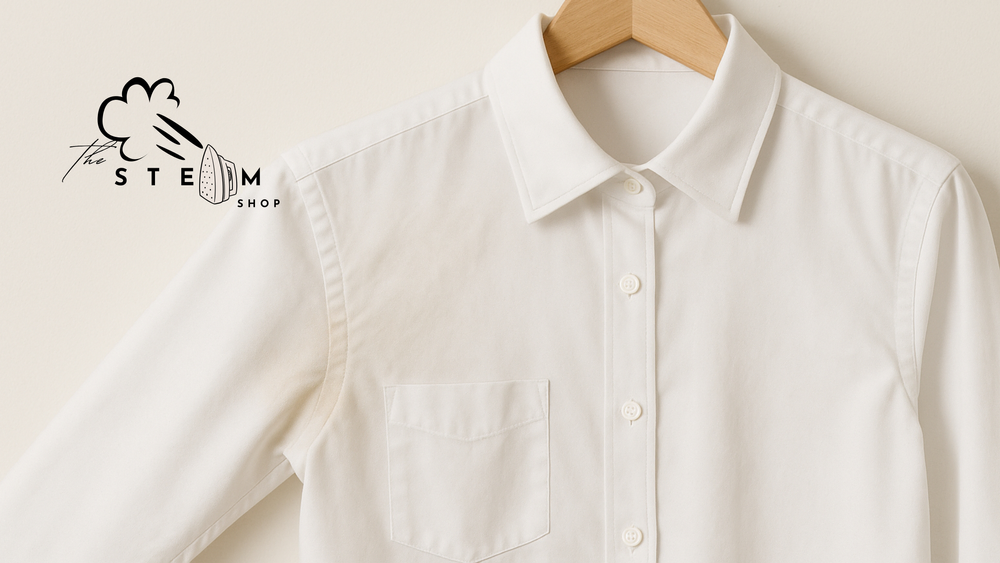Stain Removal Secrets from 30 Years in the Laundry Business
30th October 2025

At The Steam Shop, we’ve spent over 30 years removing stains from every kind of fabric imaginable — from delicate silk dresses to rugby-stained school uniforms. Over the decades, we’ve seen it all — and we’ve learned that how you treat a stain in the first few minutes can make all the difference.
If you’ve ever wondered how to remove wine, grass, grease, or sweat stains at home — or when to leave it to the professionals — this guide will walk you through it all.
The Golden Rules of Stain Removal
Here are five universal truths from our decades in the laundry business:
-
Act fast. The longer a stain sits, the harder it becomes to remove.
-
Blot, don’t rub. Rubbing can drive the stain deeper into fibres and spread it further.
-
Cold water first. Always start with cold water — hot water can set many stains permanently.
-
Test before treating. Try any cleaning solution on a hidden part of the garment first.
-
Don’t mix chemicals. Never mix bleach, vinegar, or ammonia — it’s dangerous and can ruin fabric.
🍷 How to Remove Red Wine Stains
Nothing sparks panic quite like the sight of red wine spilling onto your favorite shirt or carpet.

What to do immediately:
-
Blot gently with a clean white cloth to absorb excess wine.
-
Sprinkle salt or bicarbonate of soda on the stain — it’ll help draw out moisture.
-
Rinse under cold water from the back of the fabric (not the front) to push the stain out, not in.
Homemade solution:
Mix one part white vinegar with two parts cold water, dab onto the stain, and blot dry.
When to call the pros:
If it’s a dry-clean-only item (silk, wool, suits, etc.) — do not attempt home cleaning. Take it to an expert as soon as possible, and don’t pre-treat with anything that might react with dry-cleaning chemicals.
🌿 How to Remove Grass Stains
Grass stains are protein-based, meaning they bond with natural fibres like cotton making them harder to remove at home.

At home:
-
Pre-treat the area with liquid laundry detergent or a stain remover spray.
-
Gently rub it in with a soft toothbrush and leave for 10–15 minutes.
-
Wash in the hottest water safe for the fabric.
Old-school trick:
Mix bicarbonate of soda with a few drops of white vinegar into a paste and apply before washing — this helps lift green pigments.
Avoid using bleach on coloured clothes — it will strip the dye faster than the stain.
🍳 How to Remove Grease and Oil Stains
From cooking splashes to car grease, these stains are some of the most stubborn.

At home:
-
Blot any excess oil with a paper towel.
-
Sprinkle cornflour or talcum powder on the stain and let it sit for 15 minutes to absorb oil.
-
Brush off the powder, then apply washing-up liquid directly to the stain.
-
Wash in warm water (not hot).
Professional tip:
Dry-cleaning solvents are specially designed to dissolve grease — if your item is delicate (like silk, satin, or wool), bring it in rather than risk damage.
💦 How to Remove Sweat and Deodorant Stains
Over time, sweat and deodorant can cause yellowing underarms or stiff patches in shirts.

DIY fix:
-
Mix one part white vinegar with two parts water, spray onto the affected area, and leave for 10 minutes.
-
Add a teaspoon of bicarbonate of soda to your detergent for extra freshness.
Avoid chlorine bleach — it reacts with proteins in sweat and makes yellow stains worse.
Long-term fix:
Bring your shirts to us for a professional wash and press. Our detergents and finishing process lift residues without damaging fibres, helping your shirts last longer and look newer.
🧼 When You Shouldn’t Treat a Stain at Home
There are times when a home fix can make things worse. Call in the professionals if:
-
The item is dry-clean only (check the label).
-
The stain is oil-based on delicate fabrics.
-
You’ve already tried to remove it and it’s now set.
-
The garment is valuable or sentimental (wedding dresses, suits, vintage pieces).
In these cases, bring it straight to The Steam Shop, and don’t apply any sprays or home remedies — they can react with professional solvents and make removal harder. Have a tough stain you haven't been able to remove? Get in touch to see how we can help.
Latest Blog Posts
Why Separating Your Laundry Matters: The Hidden Risks of Mixing Everything in One Service Wash
When life gets busy, it’s tempting to scoop all your laundry into one bag and hand it over for a quick service wash. But when it comes to protecting your clothes, separating items properly is more important than many people realise.
24th November 2025
Why Your Gym Clothes Still Smell After Washing — And How To Fix It
If you live in Glasgow and train regularly — whether it’s lifting at PureGym, spin classes, boxing, running in Kelvingrove, or late-night cardio sessions after work — you already know the struggle: your clothes start to smell even when you wash them.
19th November 2025
Why Dry Cleaning Is Safer Than You Think: The Science Behind the Process
Many people hear the phrase “dry cleaning” and picture harsh chemicals or complicated machines. In reality, modern dry cleaning is a carefully controlled, science-backed process designed to protect your clothes — not harm them.
7th November 2025
Laundry Pickup in Glasgow: Which Areas We Cover (and Why That Matters for You)
If you live or work in Glasgow, laundry shouldn’t be one of your weekly headaches. Whether you’re in the City Centre, West End, Southside or surrounding suburbs, The Steam Shop offers a simple, door-to-door laundry and dry-cleaning solution — collected, cleaned, and delivered within 24–48 hours.
5th November 2025
5 Quick Laundry Hacks for Busy Glasgow Professionals
Between commutes, client meetings, and late-night emails, laundry is the last thing any Glasgow professional wants to think about. Whether you live in Shawlands, Partick, or the City Centre, these quick hacks will keep you looking sharp — without losing hours to the washing machine.
5th November 2025
